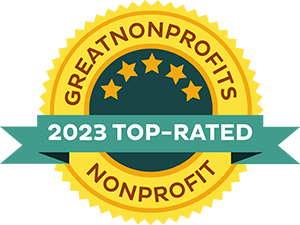Don’t Lock ’Em Up. Give ’Em a Chance to Quit Drugs.
By Caroline Preston via New York Times | Oct. 25, 2016
By the time the police found him smoking crack in a Seattle parking garage one afternoon in late 2013, Roland Vasquez had been arrested more than two dozen times. Once a paralegal in his hometown, San Antonio, Vasquez says he started using drugs about 16 years ago after helping to negotiate bail for a dealer — and receiving a half-pound of heroin as a “thank you.” A father of three young children, he moved to Seattle in the mid-2000s to be closer to his own dad and farther from the people who got him hooked. But his cravings soon overwhelmed him, and he resigned himself to cycling between jail and the streets.
On this occasion, however, the police didn’t arrest Vasquez. Instead, they handed him off to a social worker. Eventually, he began meeting regularly with a case manager who helped him stick to his methadone treatment, find stable housing, and secure a spot in a culinary-training program. Today, Vasquez, who says he has been drug-free for nearly two years, works the early shift at a Seattle cafe and recently re-established relationships with his father and children.
That afternoon in the Seattle garage turned out differently for Vasquez because he was stopped in a precinct that was piloting a program called Law Enforcement Assisted Diversion, or LEAD. The initiative, which started in Seattle’s Belltown neighborhood in 2011, empowers officers to divert low-level offenders from the criminal justice system into drug treatment and other social services. It’s based on a harm reduction philosophy, which seeks to minimize the damage associated with drug use and considers medical care and counseling more effective interventions than punishment, and it is spreading, with a dozen other jurisdictions either adopting it or preparing to do so.
“We’ve assigned the criminal justice system the responsibility for dealing with issues that are primarily about behavioral health, or poverty or addiction,” says Gabriel Sayegh, whose organization, the Katal Center for Health, Equity, and Justice, is helping to expand the use of LEAD. He calls the program an “important transitional vehicle” toward a public-health-oriented response to drug abuse.
The United States once had a less punitive approach to addiction. But beginning in the 1970s, its presidents, exploiting fears of criminality that white voters associated with African-Americans, initiated a war on drugs that expanded drug policing and prosecutions. This shifted money away from treatment toward interdiction and incarceration, and prodded the country to embrace a “lock-’em-up” mentality.
Belatedly, those policies have come in for a reckoning. Politicians from both parties now acknowledge that too many people have been put away for too long; in any given year, nearly a third of those who enter prison are admitted for drug crimes. Racial inequities are stark. While studies suggest that black Americans are less likely than whites to sell drugs, they are 3.6 times more likely to be arrested on suspicion of drug dealing.
It was evidence of those jarring racial disparities that led Seattle officials to consider the LEAD approach. Lisa Daugaard, now the director of the nonprofit Public Defender Association, spent years waging a legal battle against the city’s police force over racially discriminatory patterns in drug arrests. At the time, Seattle’s population was 8 percent African-American. Research suggested that white people dominated the city’s drug trade. Yet 67 percent of those picked up for serious drug offenses (other than marijuana) were black. “It was an extreme situation,” she said.
While Daugaard was winning in the courts, those legal victories weren’t changing the behavior of the police on Seattle’s streets. Then, a forward-thinking narcotics captain named Steve Brown challenged Daugaard’s group to identify what a more equitable approach to policing might look like. From those conversations, LEAD emerged.
With an initial $800,000 in annual funding from foundations, the program was introduced in Seattle’s fast-gentrifying Belltown neighborhood. Early assessments are promising. A University of Washington analysis found that LEAD participants — some 450 so far — were 58 percent less likely to be rearrested than those in a control group. That drop is even more pronounced than results from some other “alternative to incarceration” programs, says Susan Collins, an associate professor at the University of Washington and a lead author on the study.
While LEAD fits in with the growing body of incarceration alternatives like drug courts, it is distinct in some important ways. For example, officers divert people to LEAD before booking them. Participants not only avoid sentencing and prison; they aren’t even arrested or charged. That saves money that would otherwise go to lawyers, judges, court clerks and correctional facilities.
It also saves people from stigmatization and discrimination. A felony conviction can mean the loss of public housing, food stamps, a driver’s license, voting rights, or custody of children. Answering “yes” to an employer’s question about a criminal past can hobble one’s chances of finding work. “The collateral consequences that flow from a conviction are incredibly destructive,” says Alice Green, a criminal-justice reform advocate in Albany, which initiated a LEAD program in June 2015. “Even if you are in jail for just two or three days, if you don’t show up for work, you might lose your job.”
There’s one more important difference. Drug courts typically favor an abstinence-based approach to recovery. If people start using again (and even drug replacement therapies like methadone are banned by some courts), they’re penalized. They might be sent back to jail. LEAD, by contrast, is grounded in the understanding that staying off drugs is difficult. (The relapse rate hovers between 40 and 60 percent.)
“We keep working with people knowing that many, if not most of them, are going to continue to use drugs and may continue to commit crimes related to their drug use for some period of time,” says Daugaard. “And it’s still effective to work with them within the harm reduction framework, and it still reduces the damage they’re doing to themselves and to other people over time.”
This was the case for Vasquez. After his diversion into LEAD, he kept using; “I wasn’t ready to change,” he says. He refused help from his case manager, hid from the police, and briefly returned to Texas to comply with an outstanding arrest warrant. It wasn’t until many months later, after he developed an abscess from injecting heroin, that Vasquez returned to LEAD. He began to bond with his case manager, who helped him get a cellphone, new clothes, and a Metro card. But his experience suggests other difficulties that LEAD faces, as well. For example, Vasquez initially assumed LEAD was a police tool for recruiting informants. “It’s a really good program,” he says, “but on the street it was considered a snitch program, because the officers were running it.”
Indeed, LEAD is, above all, a public safety, rather than a social services, program, and that’s both a benefit and a burden. The police decide who is diverted, based on eligibility requirements. That worries some criminal-justice advocates. Could LEAD result, for example, in “net widening,” by which the police inadvertently introduce a broader array of cases into the criminal justice system? (Net widening has been a subject of criticism of drug courts.) Or might the police divert more white, middle-class individuals, while minorities are still tracked into jails and prisons?
This hasn’t happened in Seattle. About 57 percent of LEAD participants are black, and the number of overall drug arrests has dropped significantly, says Daugaard. But as LEAD rolls out elsewhere — at least 25 additional jurisdictions have signaled interest — local officials will need to carefully scrutinize the program’s outcomes, she says.
In Albany, all 332 officers have received training in harm reduction and avoiding implicit bias. Brendan Cox, the city’s police chief, hopes that LEAD can trim the time officers spend booking people, chasing them down after they miss court appointments, and rearresting the same individuals month after month. “We can’t keep arresting our way out of problems,” he says. “Isn’t that the definition of insanity — that you continue to do the same thing over and over and expect a different result?”
Even if LEAD continues to expand, any dent it could make on jail and prison populations would be relatively modest. When Albany officials assessed how many people might qualify for the program in a single year, they tallied about 150. The city arrests roughly 4,470 people annually. As the Cut 50 movement argues, a more radical reset would be needed to meet very ambitious goals like halving the nation’s prison population. But LEAD could be an important bridge, helping to habituate the public to a new way of thinking about addiction. Not to mention, says Green, that “there are things you need to do while you’re also working to change the system.”

